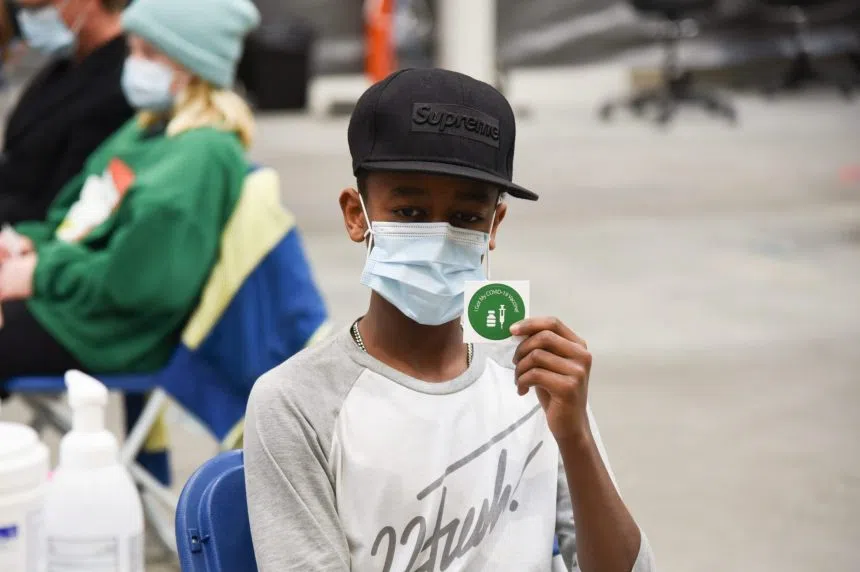Since Wednesday, more than 12,500 kids between the ages of five and 11 have received their first COVID-19 vaccination in Saskatchewan.
That number is expected to grow throughout the next few weeks as parents continue to make scheduled appointments for their children.
Dr. Ayisha Kurji, a pediatrician in Saskatoon, said there’s large interest from friends and clients who want to have their children vaccinated.
“The questions are, ‘How do I get it?’, ‘Where do I get it?’ and the practical tips around it,” Kurji said on The Brent Loucks Show. “It’s really nice to hear that most people are excited to get the vaccine for sure.”
While it can be very intimidating for a young child to go through getting the shot, there’s a handful of different tactics to make the process as smooth as possible.
Kurji says it’s vital to create a safe and friendly environment for all of the children.
“It definitely helps to have a few different things,” she said. “They get to pick their Band-Aids (and) there’s fun things to look at on the wall.”
There are other things for the children such as therapy dogs and other specialists on site to deal with kids feeling forms of anxiety, according to Kurji.
After the first vaccination shot, there’s a minimum three-week waiting period before children are eligible to get their second shot.
Kurji made it clear that waiting more than three weeks is something to consider for all children.
“The National Advisory Committee on Immunizations has actually looked at the data,” she said. “We (adults) all got ours not three weeks (bu) more like eight weeks apart.
“They learned that it actually provided better long-term protection.”
The recommendation now is to wait the full eight-week period to get a second dose, but the option to wait just three weeks in between doses is still possible.
With the new Omicron variant now being confirmed, Kurji says the best course of action for everyone is to still get vaccinated.
“We don’t know much about this new variant yet, but what we do know is that the vaccine has been working so far. It’s the best weapon that we have to protect ourselves, (and) protect others,” Kurji said.







